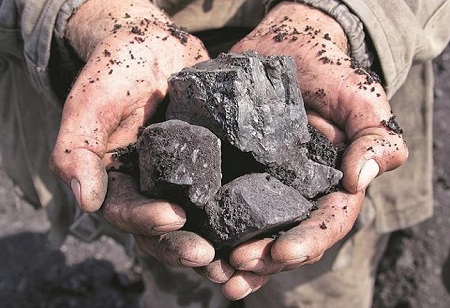Regulated coal supplies to non-power sectors and allowing participation of captive miners amid an increase in production by the key supplier -- Coal India -- may help corporate India avoid what appeared to be a major power crisis in the making until recently, but the threat still looms when power demand picks up from here, rating agency Crisil said in a report.
According to the report, a surge in power demand amid rapidly dwindling coal inventories, higher prices of imported coal, delayed payments to power producers, long dry spells impacting hydro power generation, and maintenance shutdowns at nuclear plants has had a domino effect on the sector in recent months.
Storms in some coal mining belts have impacted the supply further, worsening the situation.
Coal stocks are unlikely to improve to the previous level of 15-18 days inventory anytime soon, the report said. Also, availability of rakes and a pick-up in power demand in March-May will be the key monitorables from here.
In the five years through September, growth in
India's monthly power demand averaged 4 per cent, though it did exceed 12 per cent in a few months of fiscal 2020. In recent past, power demand has surged again. Base demand has clocked 13 per cent growth year-to-date. Volatility in base demand has also risen sharply over the past two years. Peak demand growth has been higher at nearly 15 per cent, while volatility has spiked here, too.
Crisil Research estimates overall growth in power demand for the current fiscal at close to 7 per cent. Over the next three months, given the criticality of the current coal crisis, average demand would be lower than in the past few months, an analysis of five-year data trends shows.
While this may offer temporary respite, the real monitorable for power avail ability would be the March-May period when temperatures begin to soar, the report said.
Therefore, a build-up in coal inventories before end-February is crucial.
Highly industrialised states drive power demand growth, face moderate risk. A state-level monthly demand assessment indicates that on average, monthly power demand growth was close to 20 per cent for highly industrialised states such as Maharashtra, Tamil Nadu and Gujarat (which account for close to 30 per cent of overall power demand). This can be attributed to a sharp rebound in the economic activity that has led to a revival among larger power consumers such as industries and commercial complexes compared with last year.
Growth from moderately industrialised states has been close to 15 per cent year-to-date, while states with more residential or agricultural consumers saw growth of less than 10 per cent. Further, pent-up post-pandemic demand has caused power demand to be per cent higher than even pre-pandemic fiscal 2020.
In addition to demand, Crisil said, supply sources also play a role in power generation. Supply of coal, in particular, plays a decisive role.
